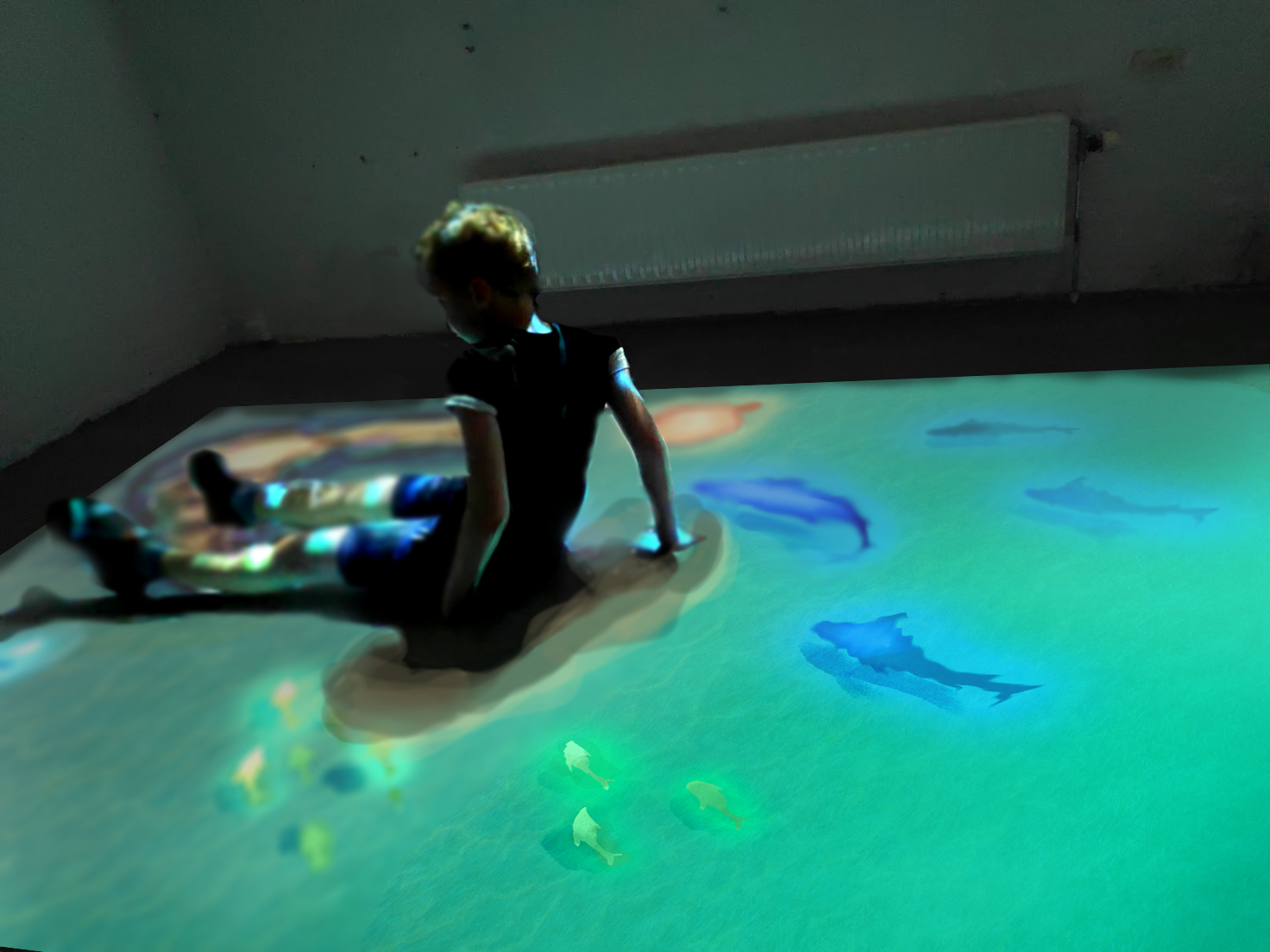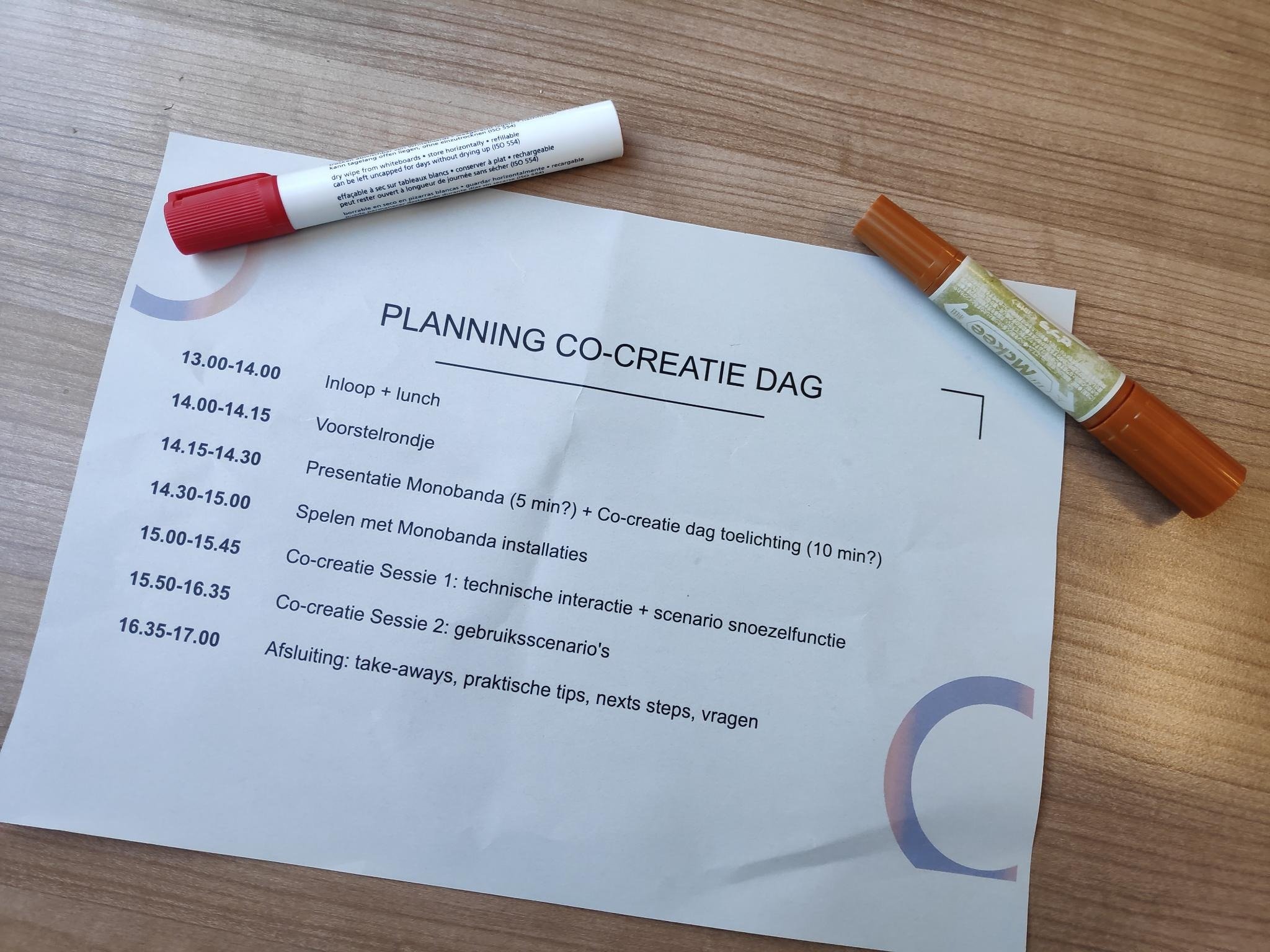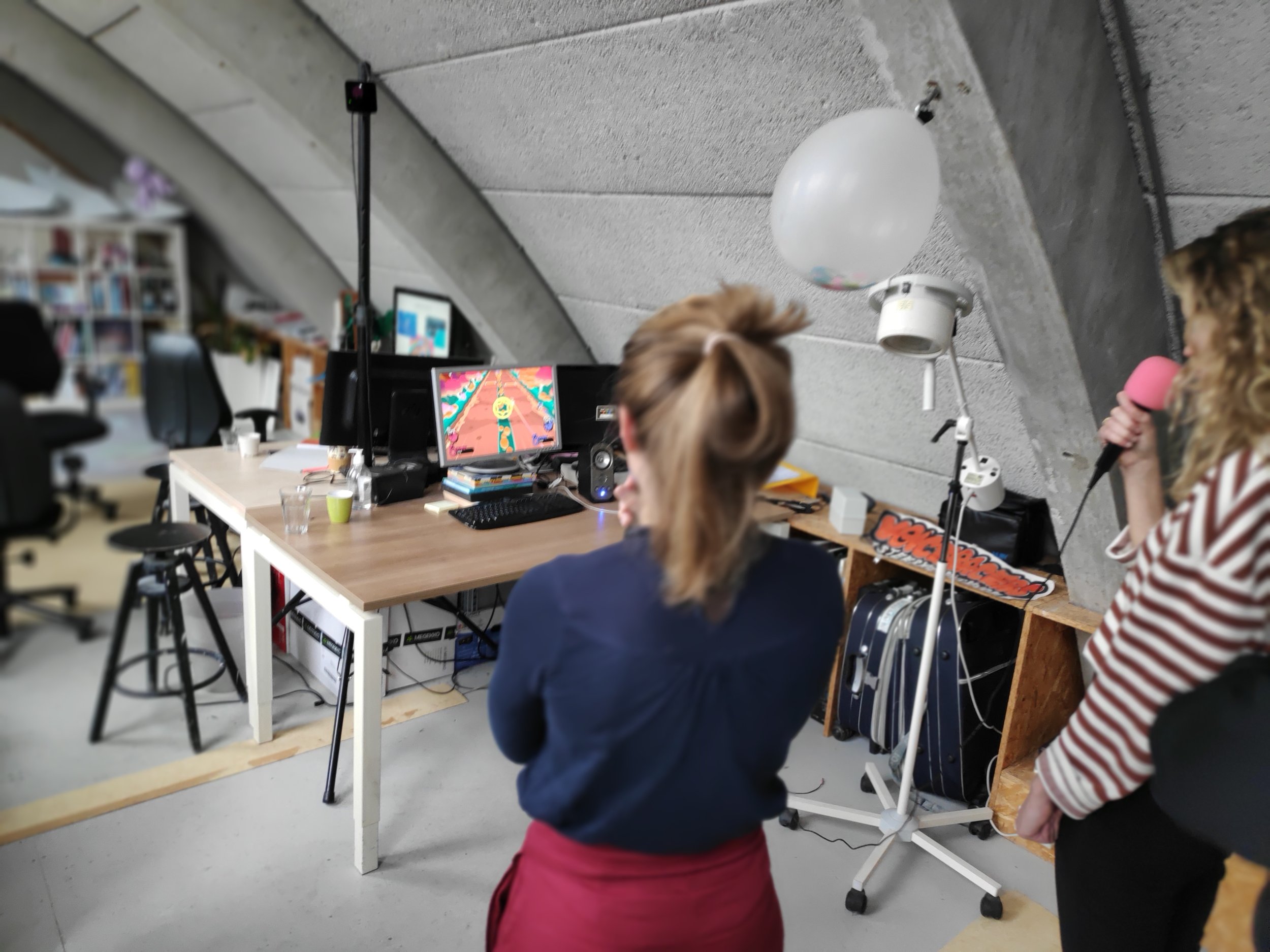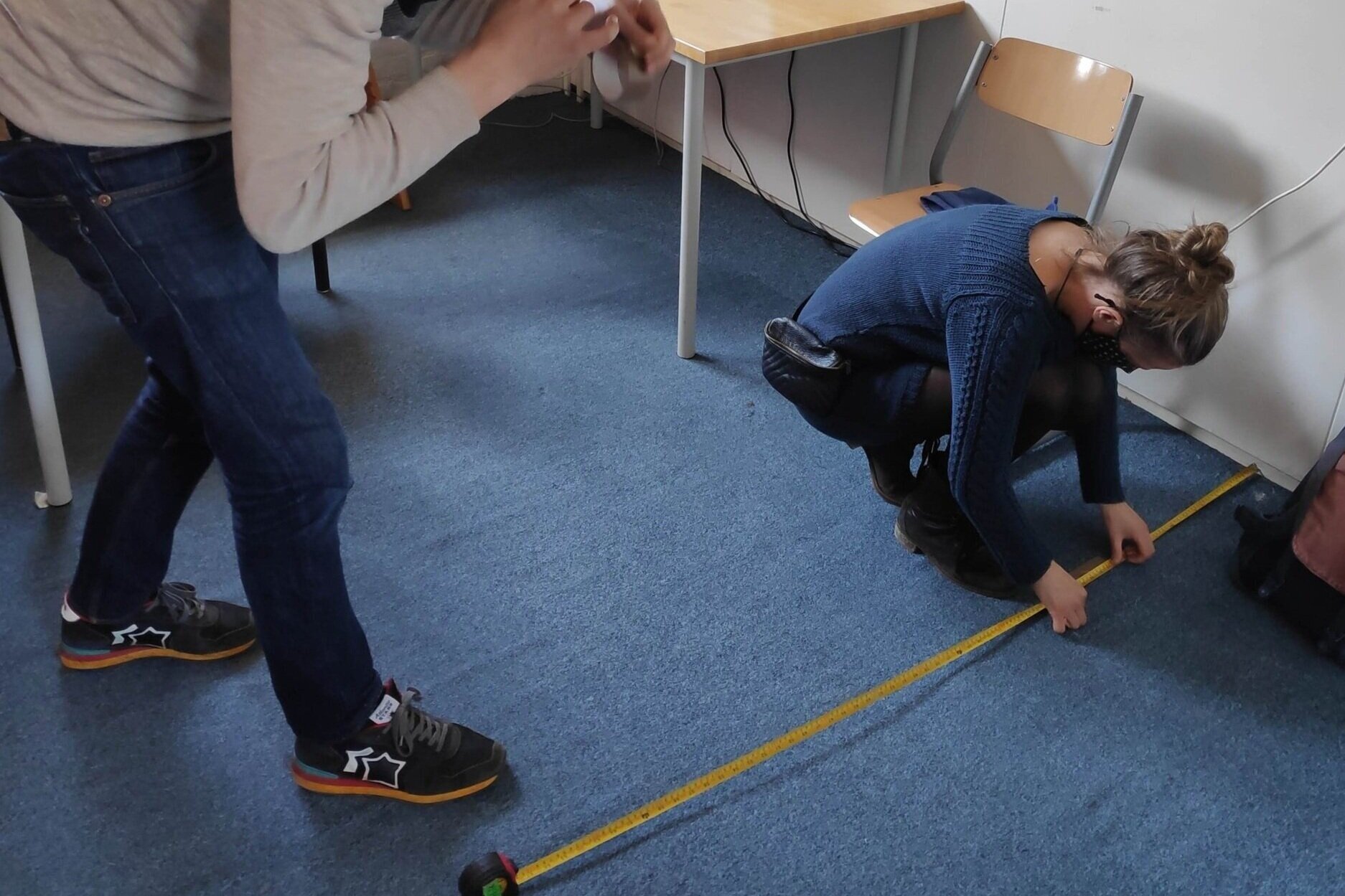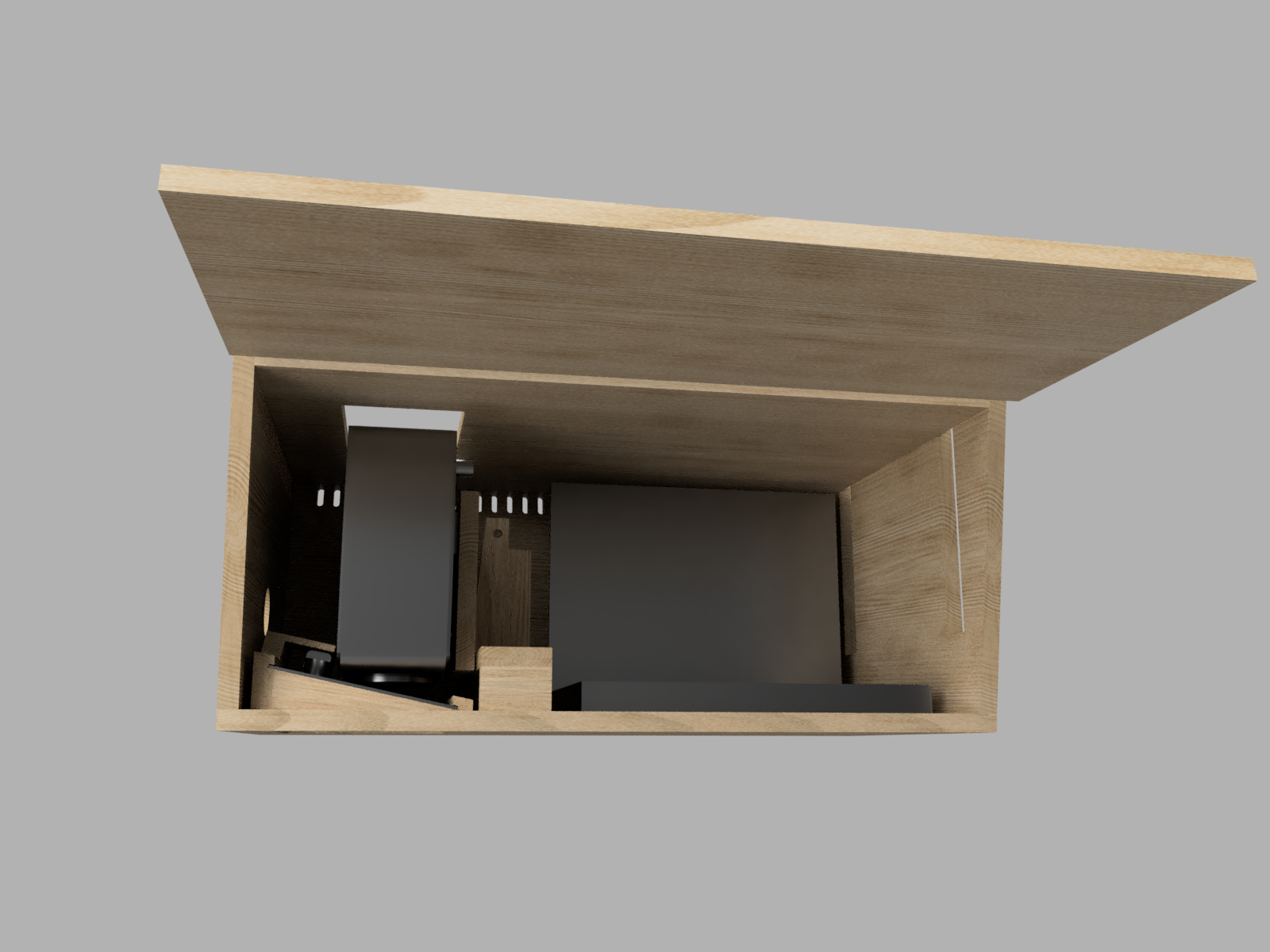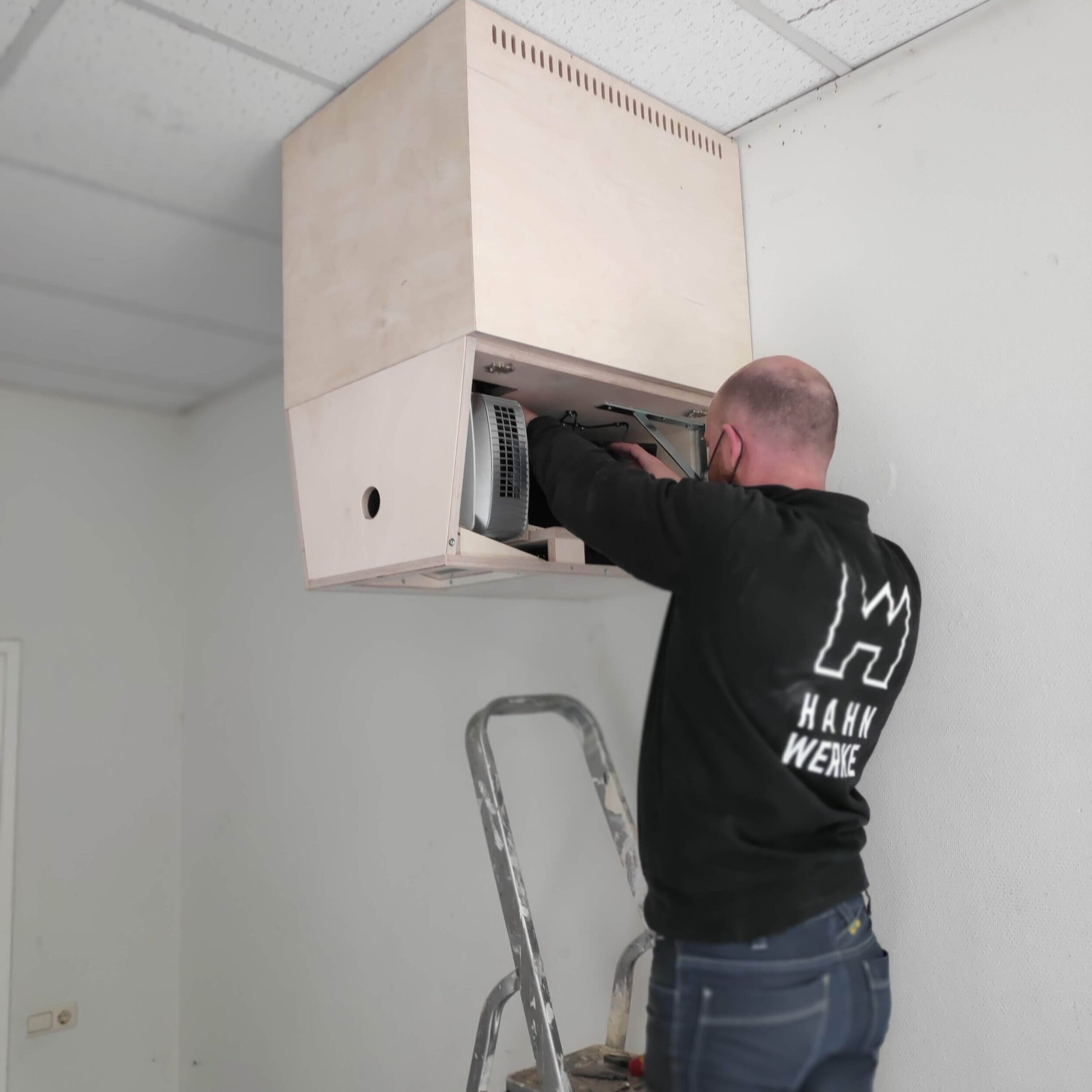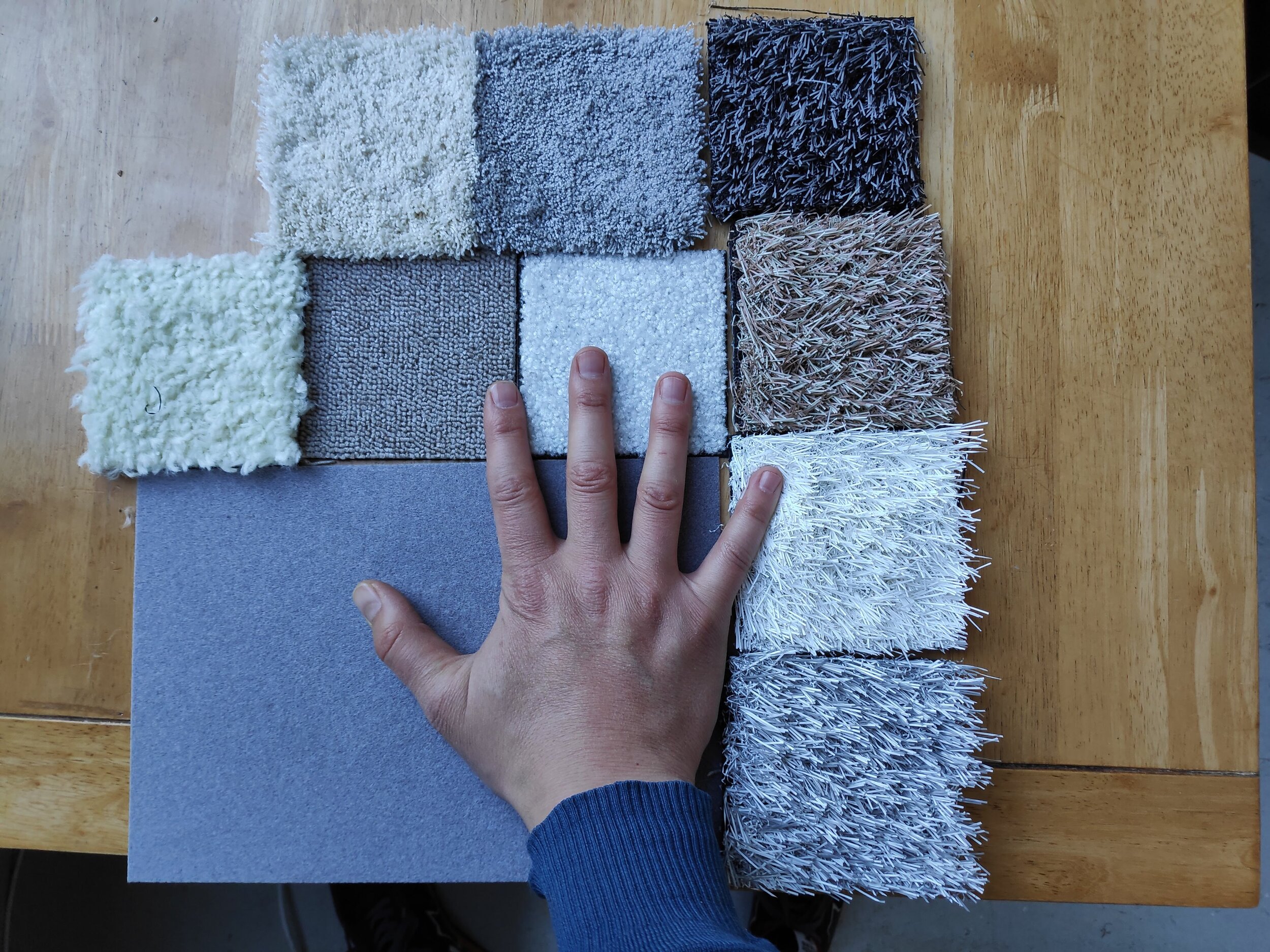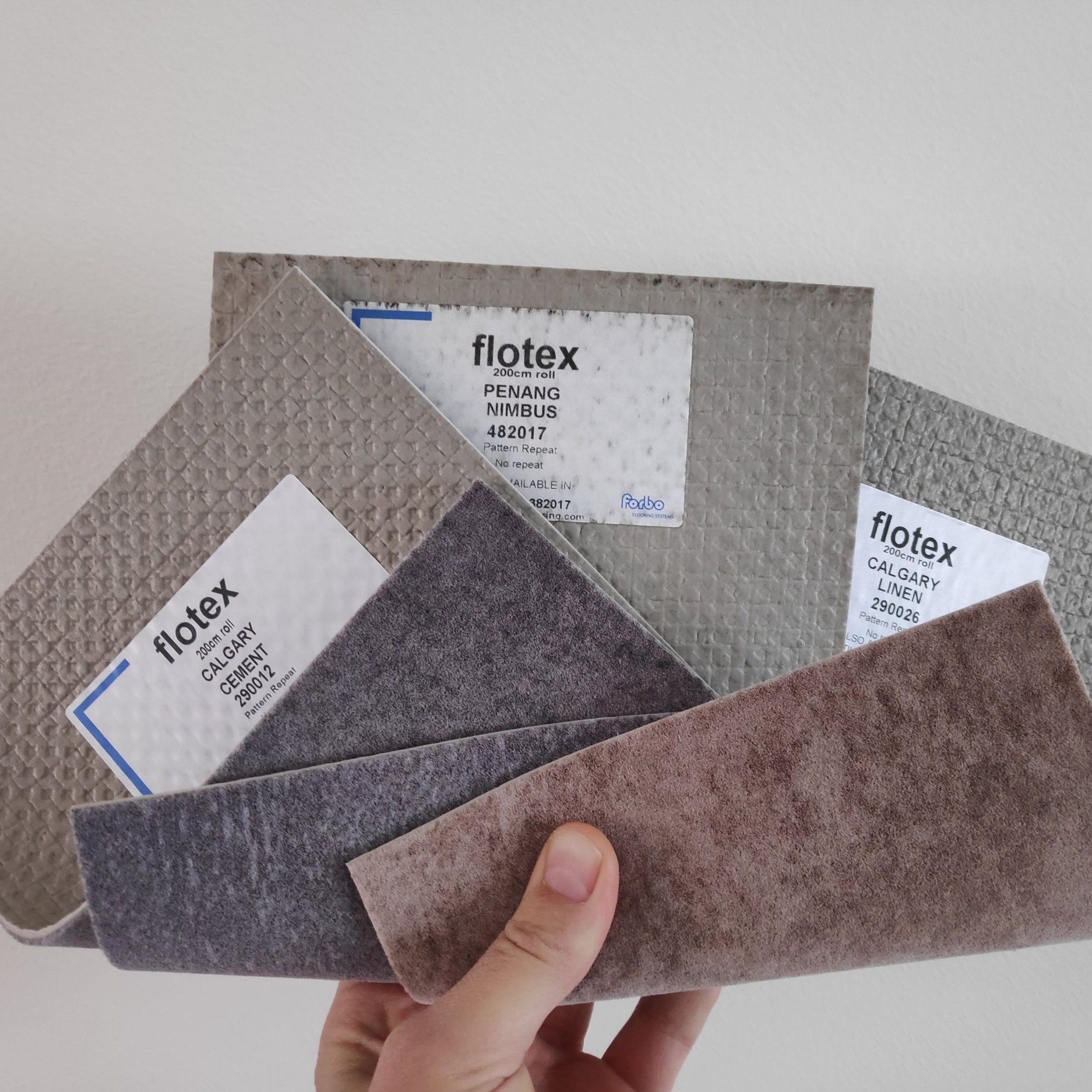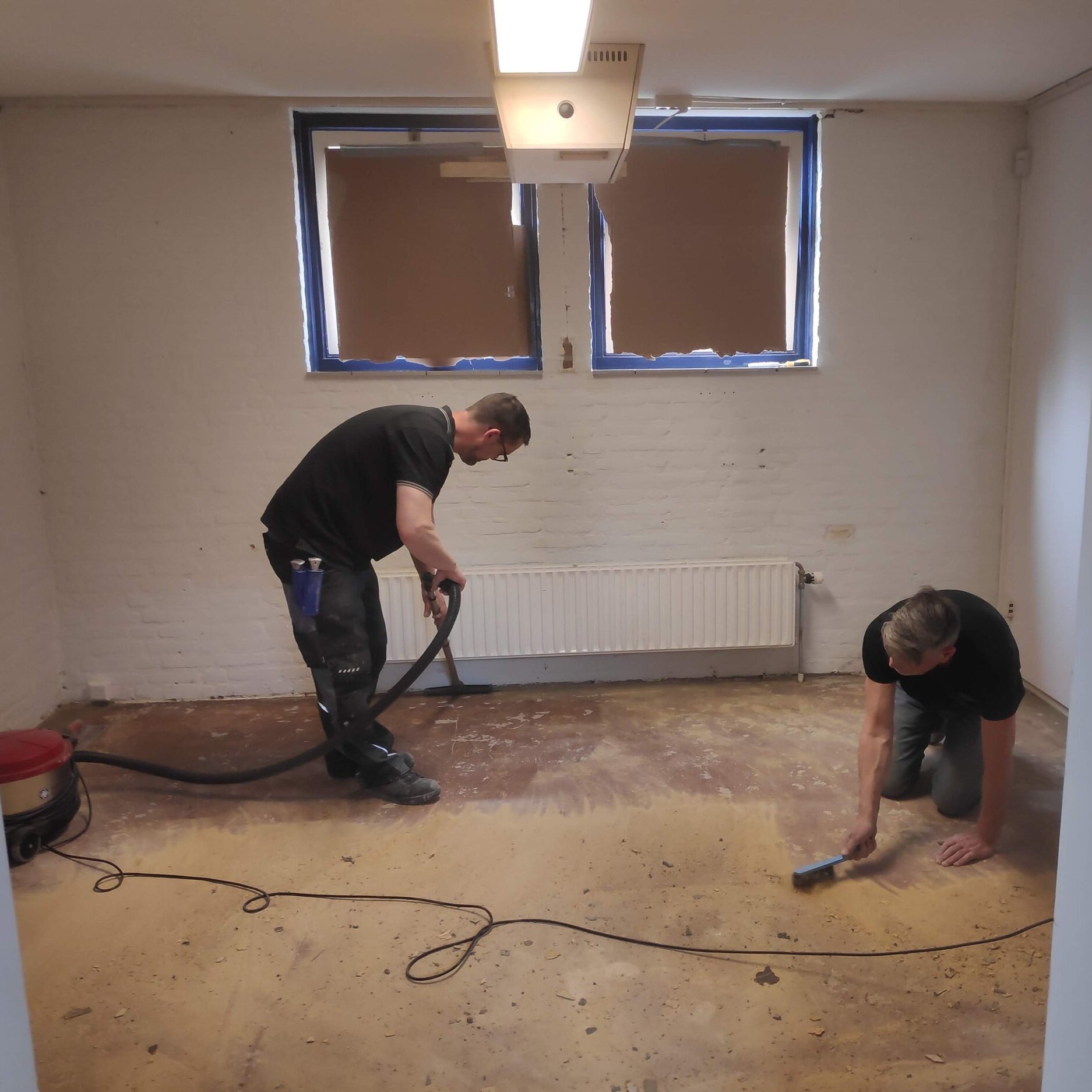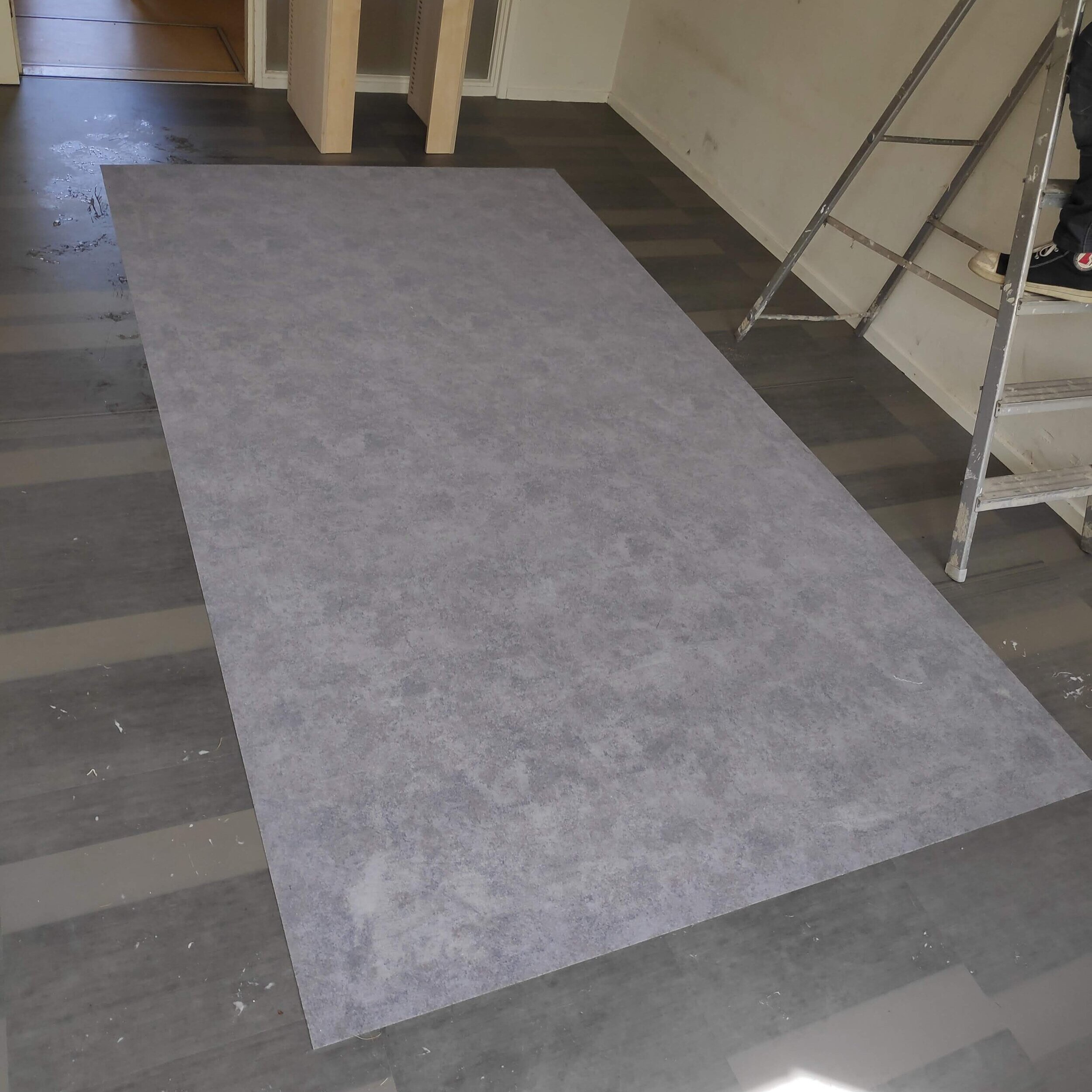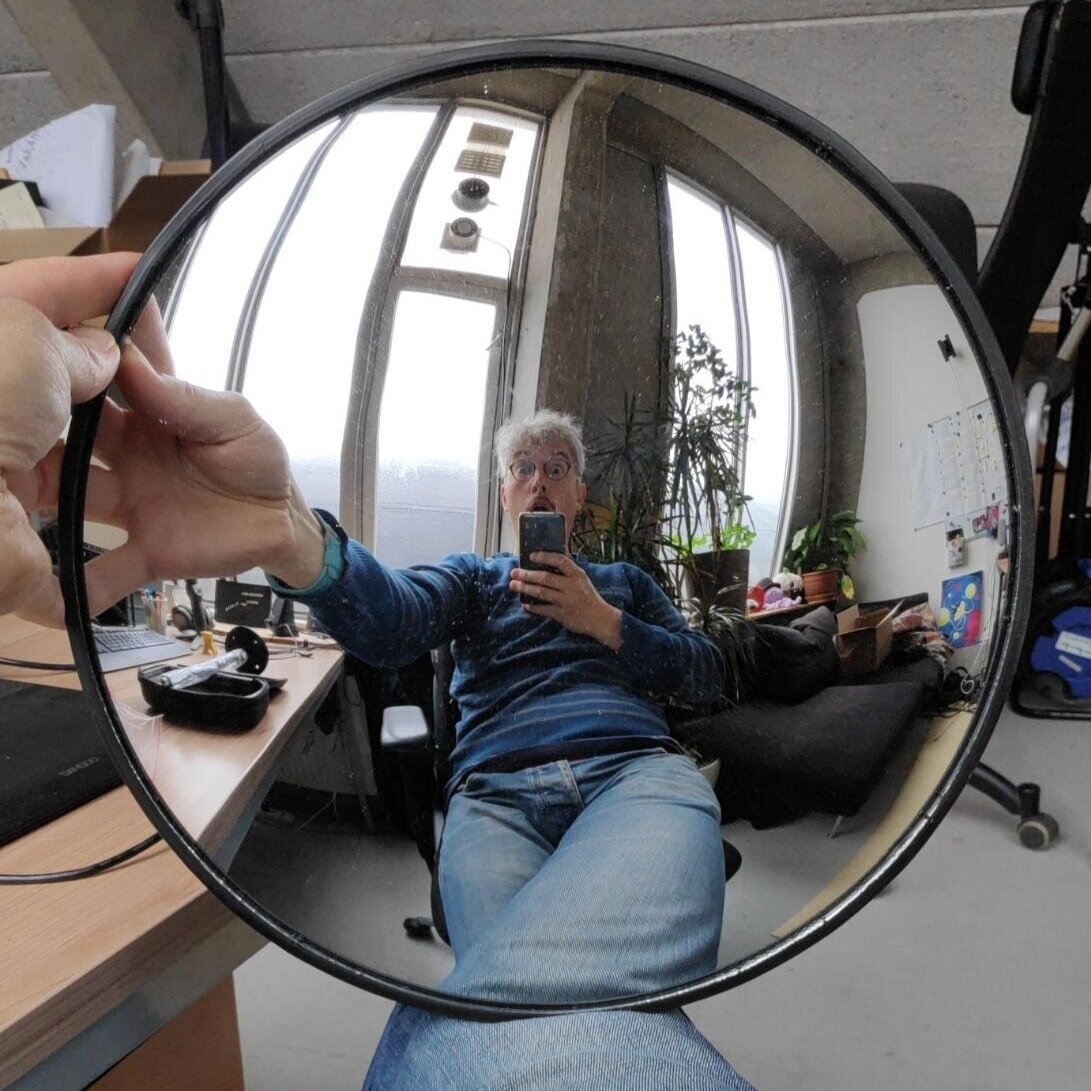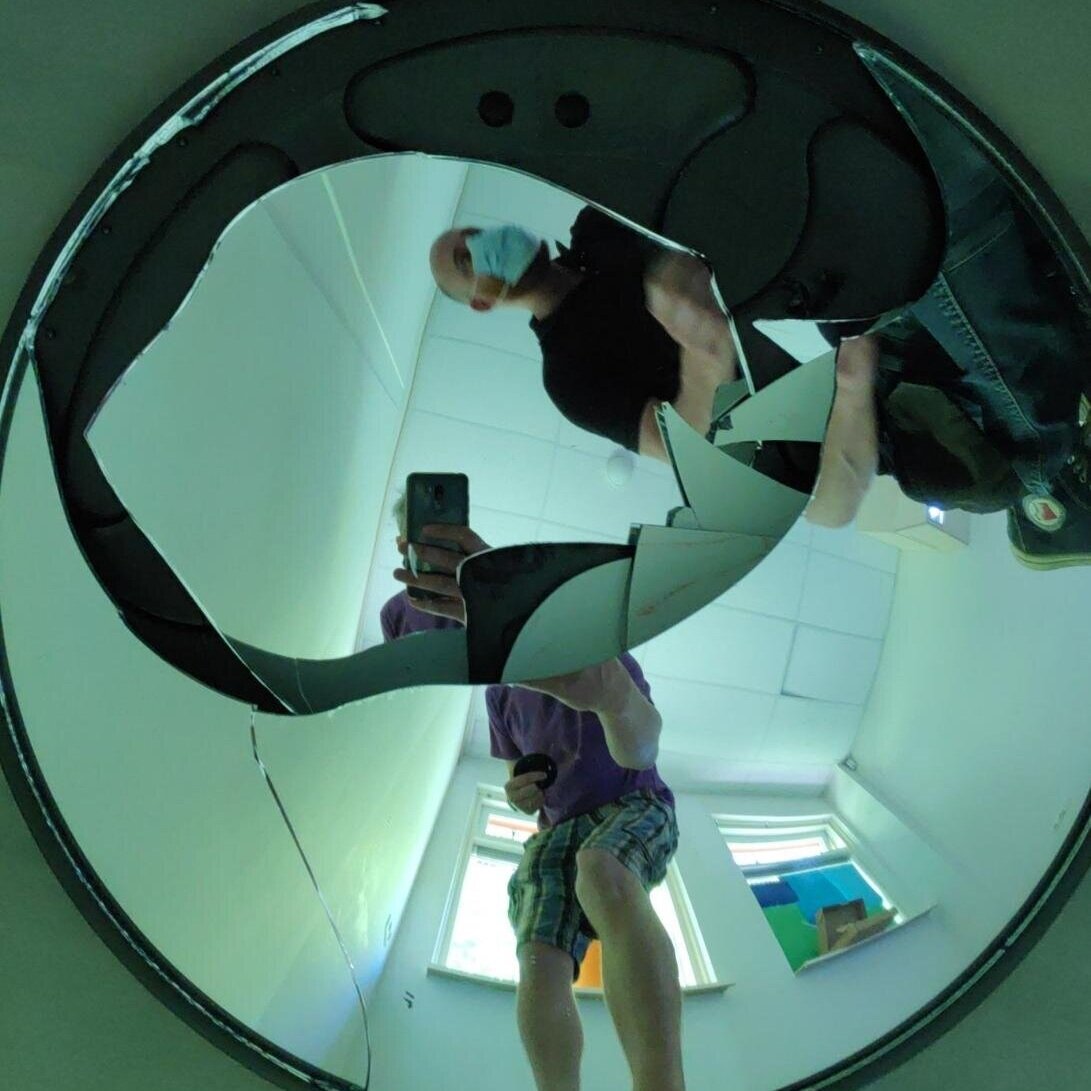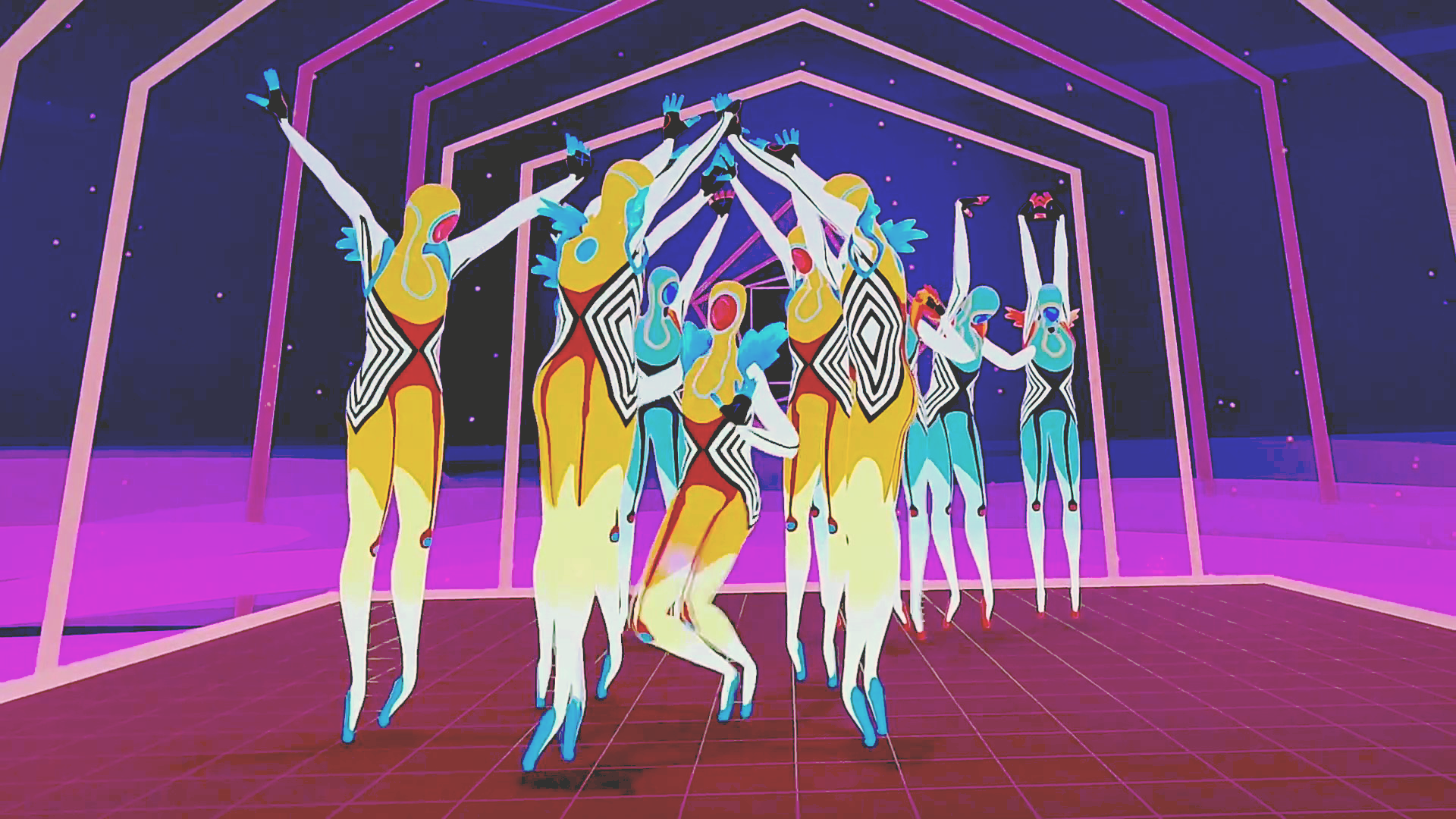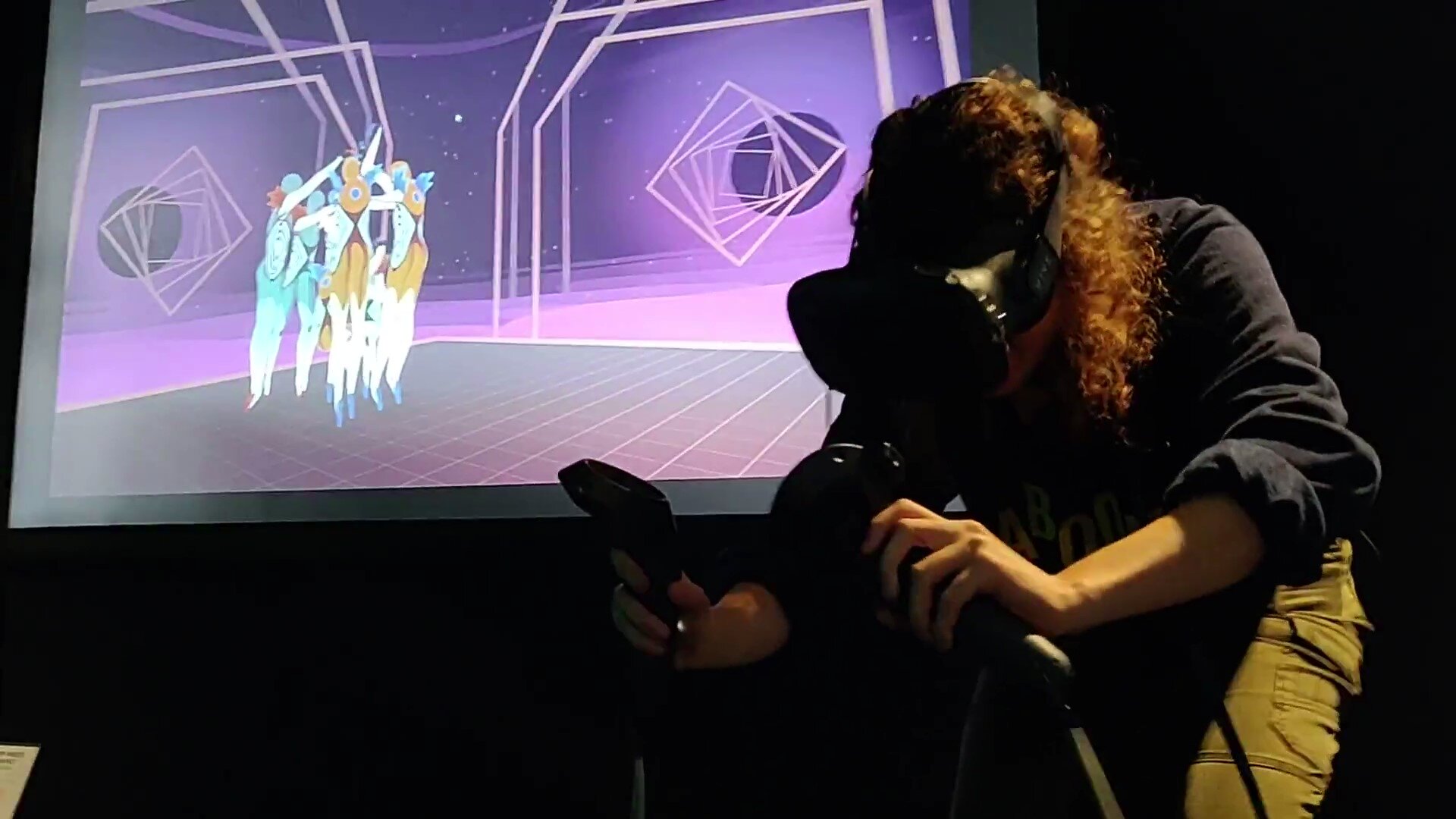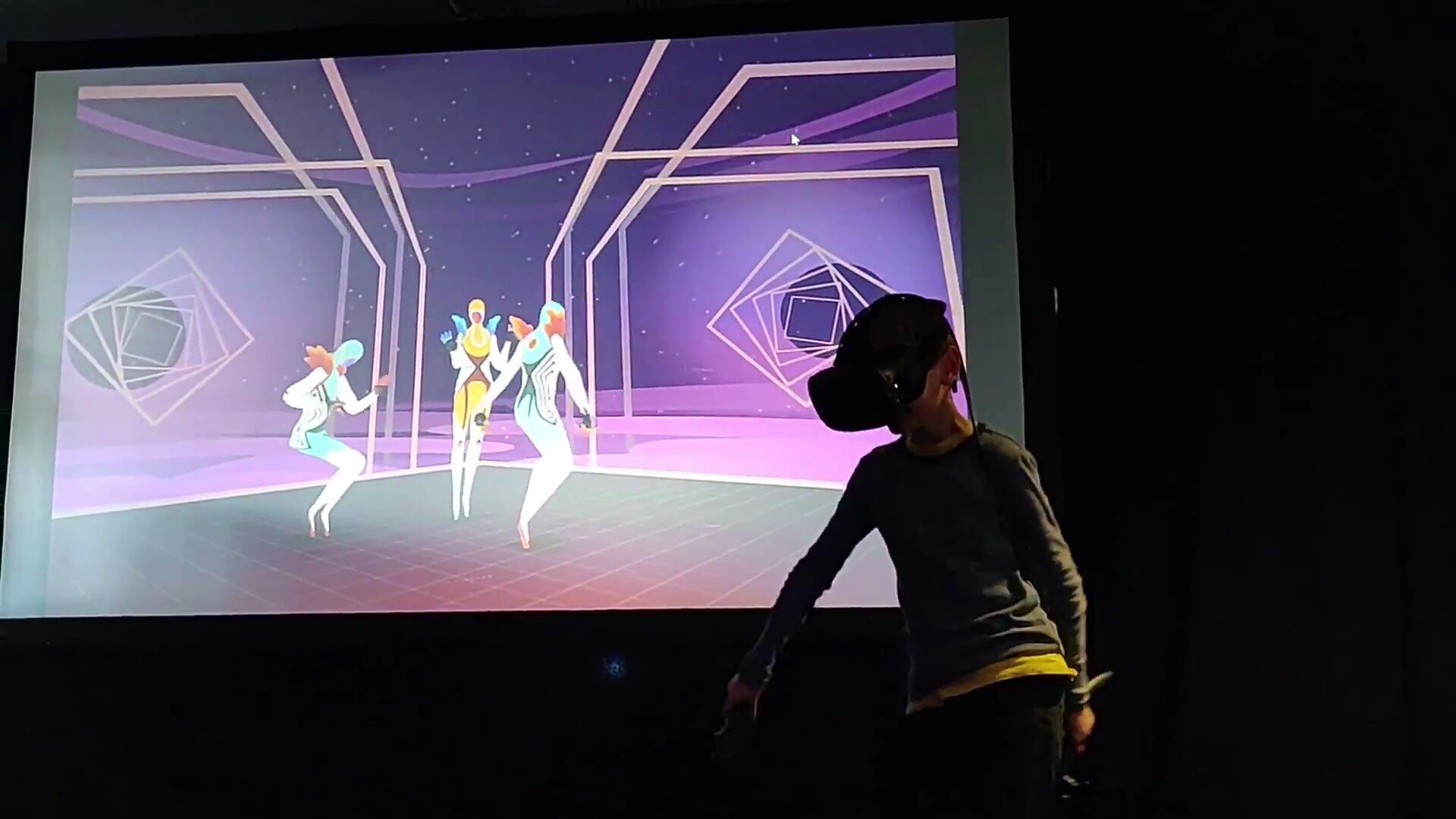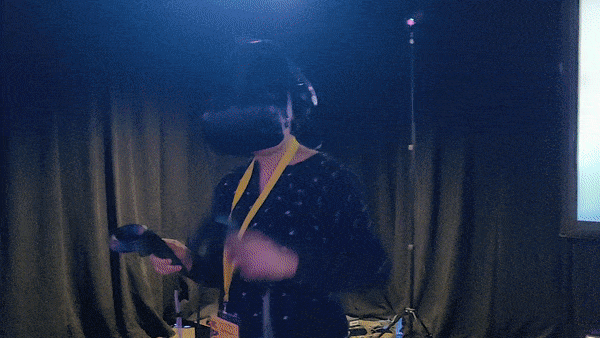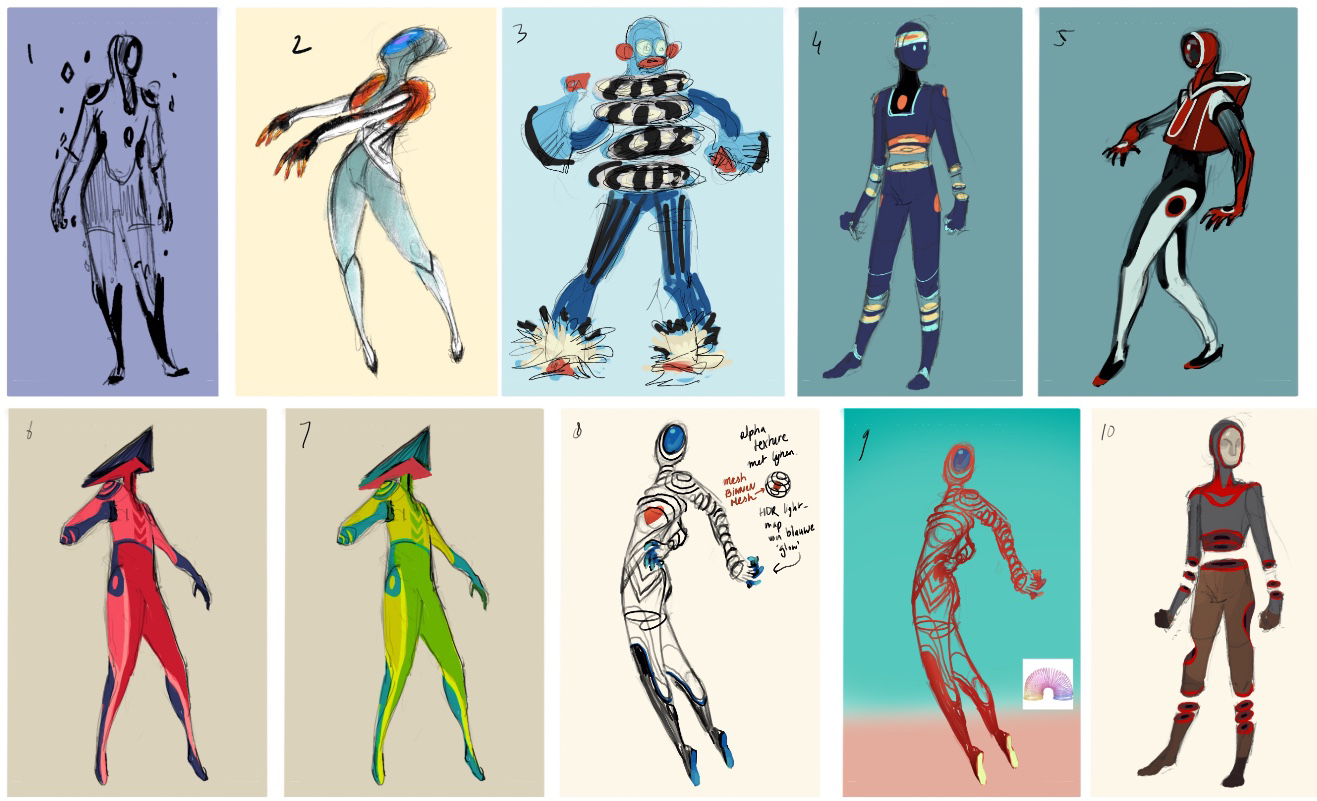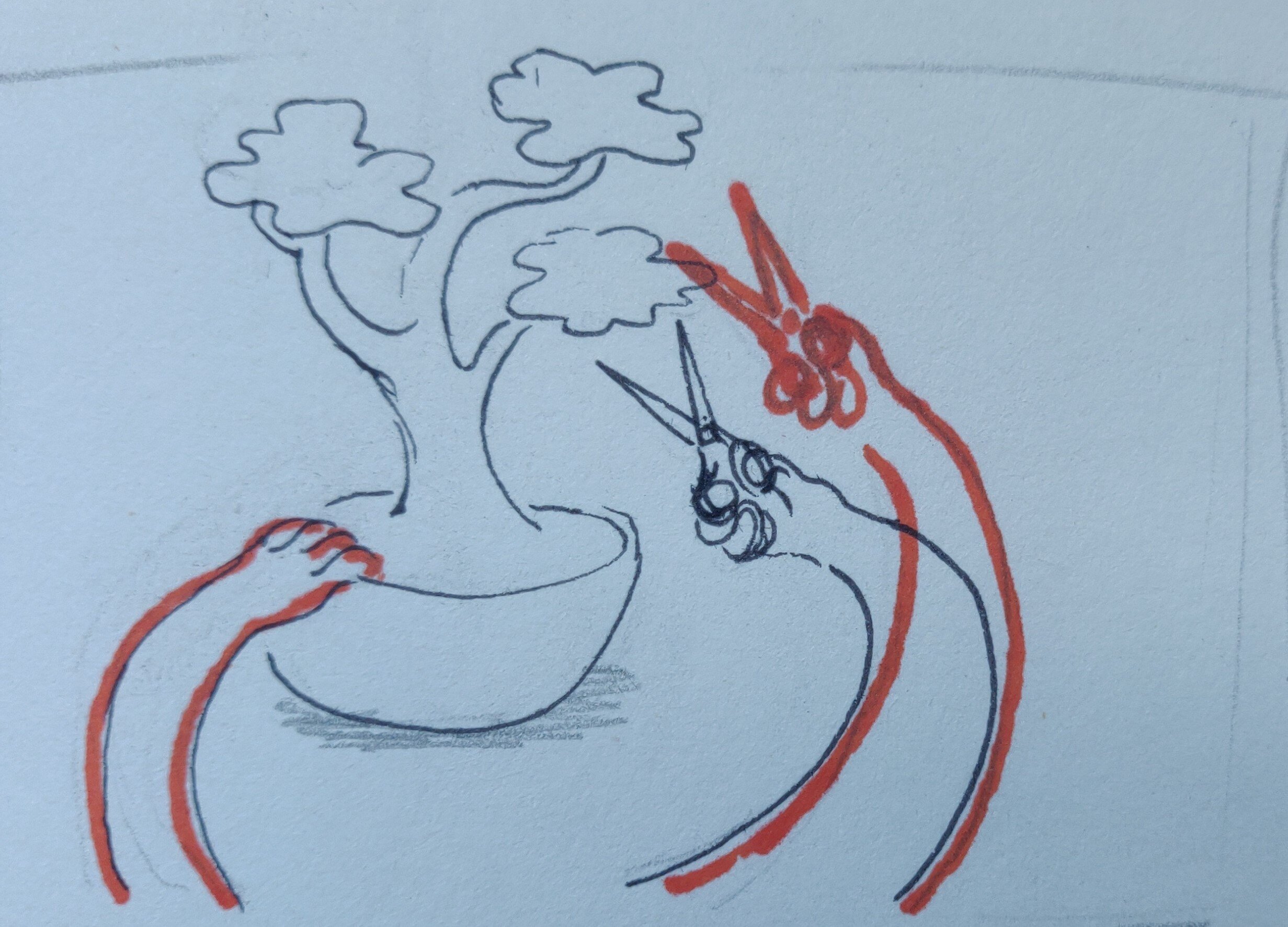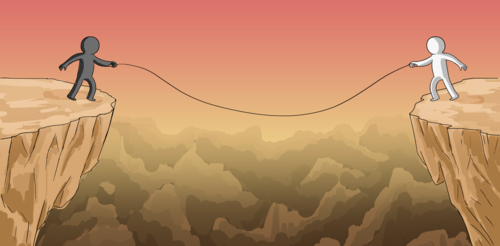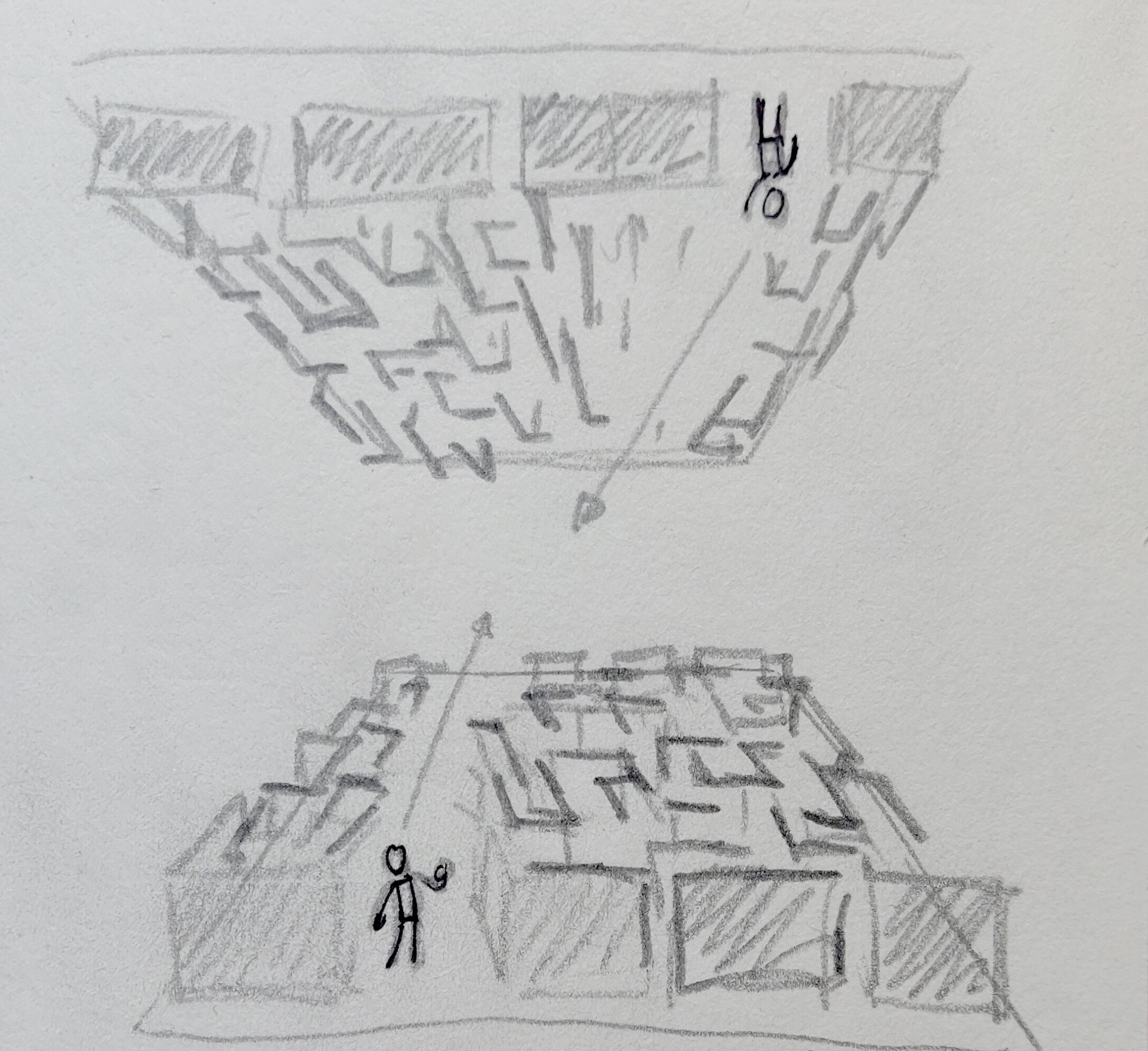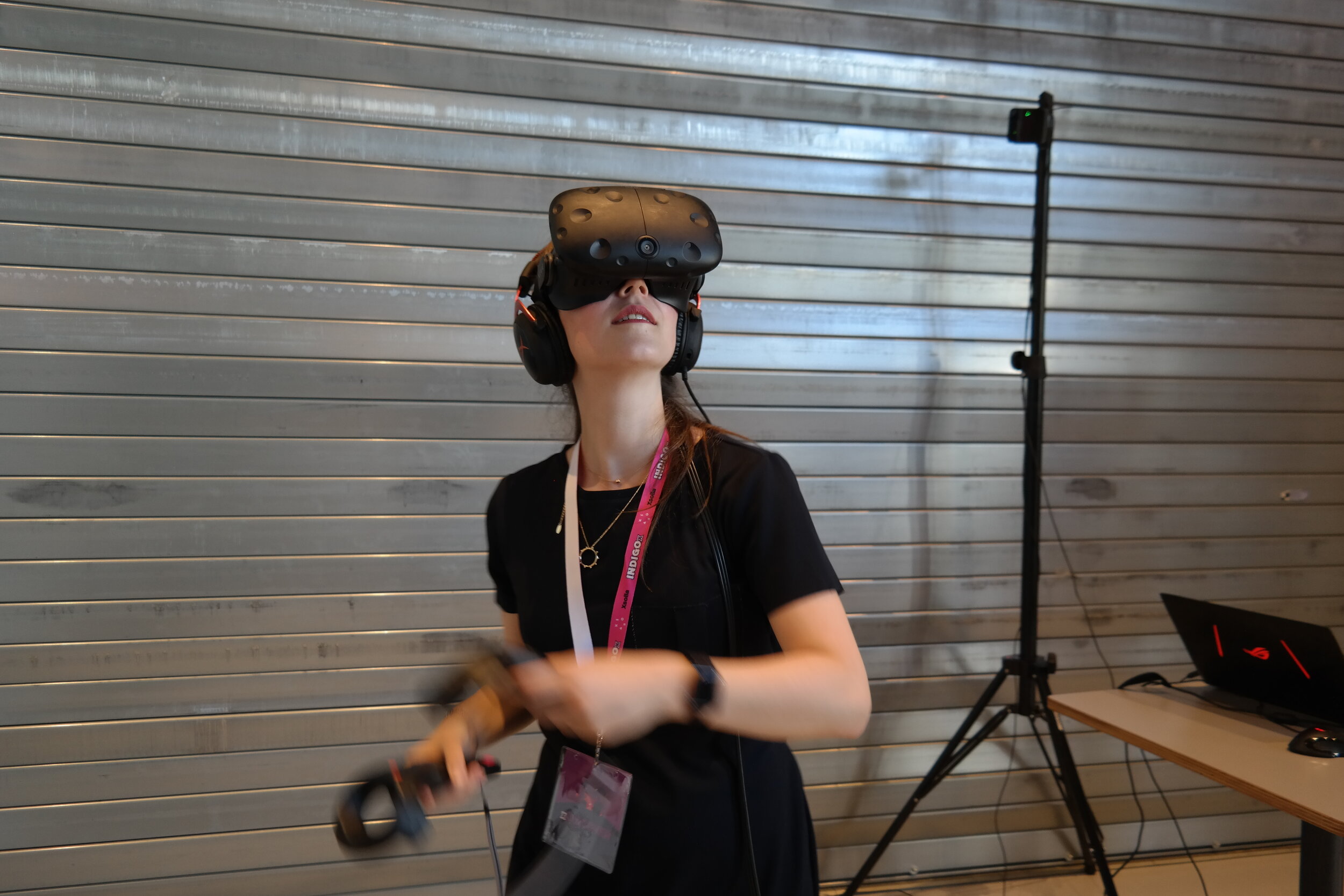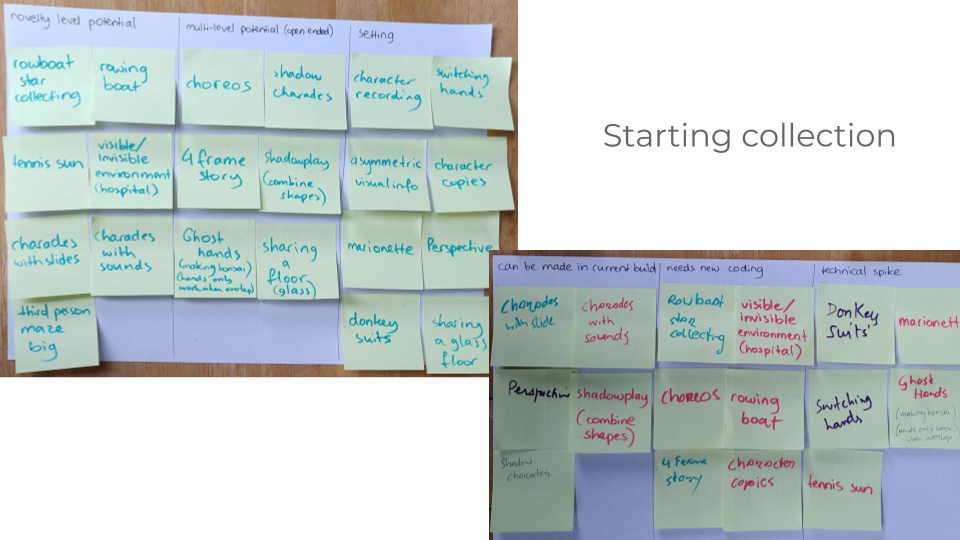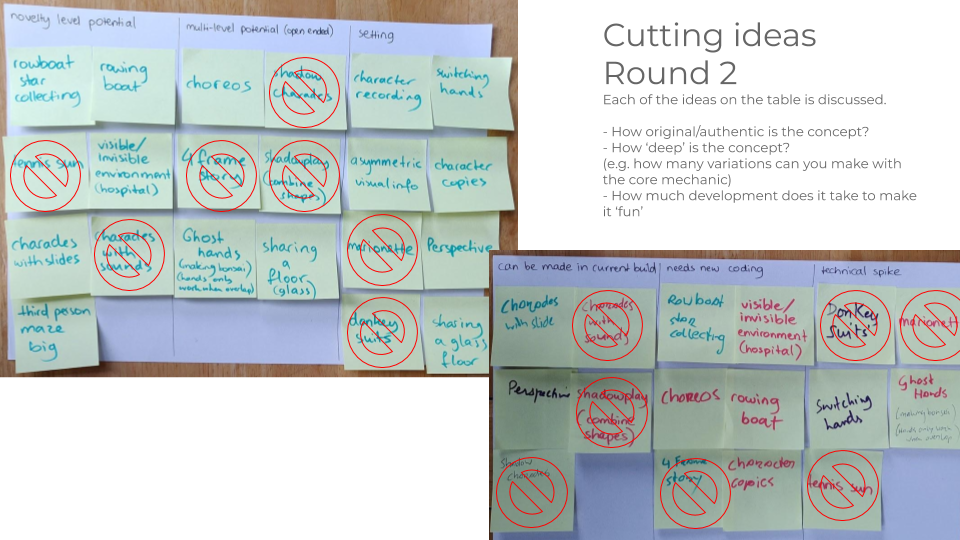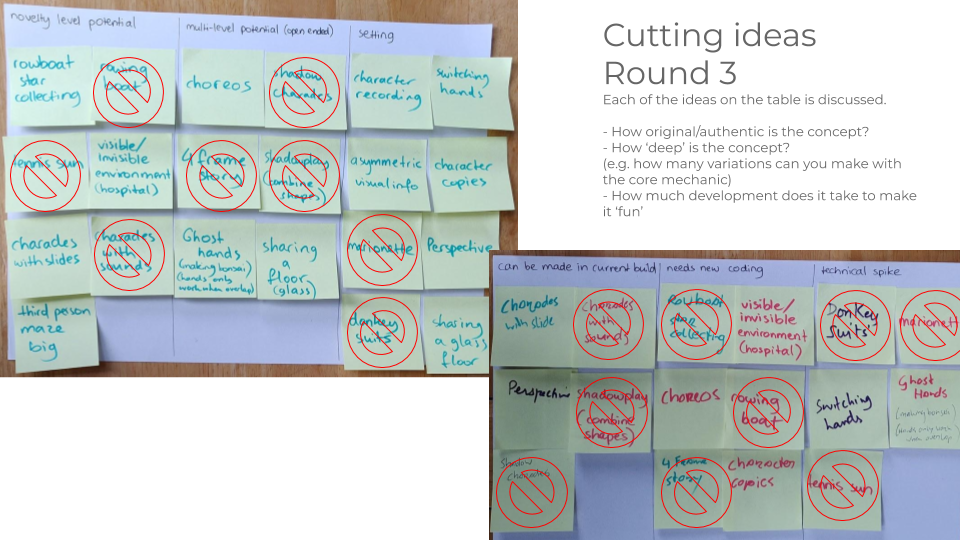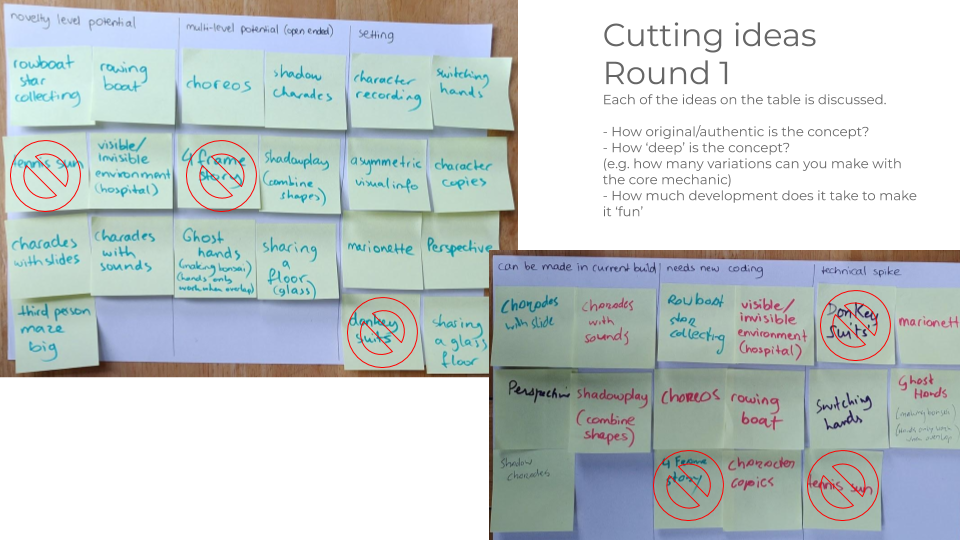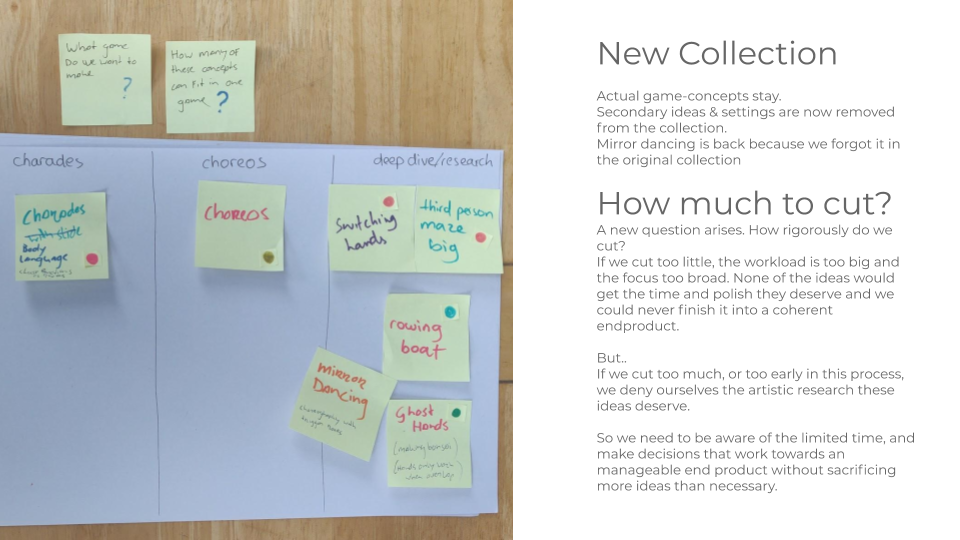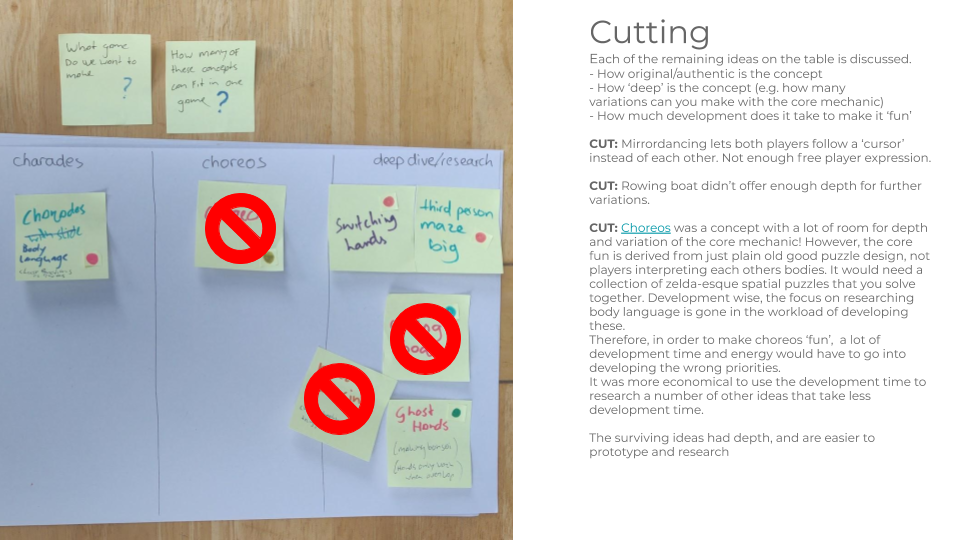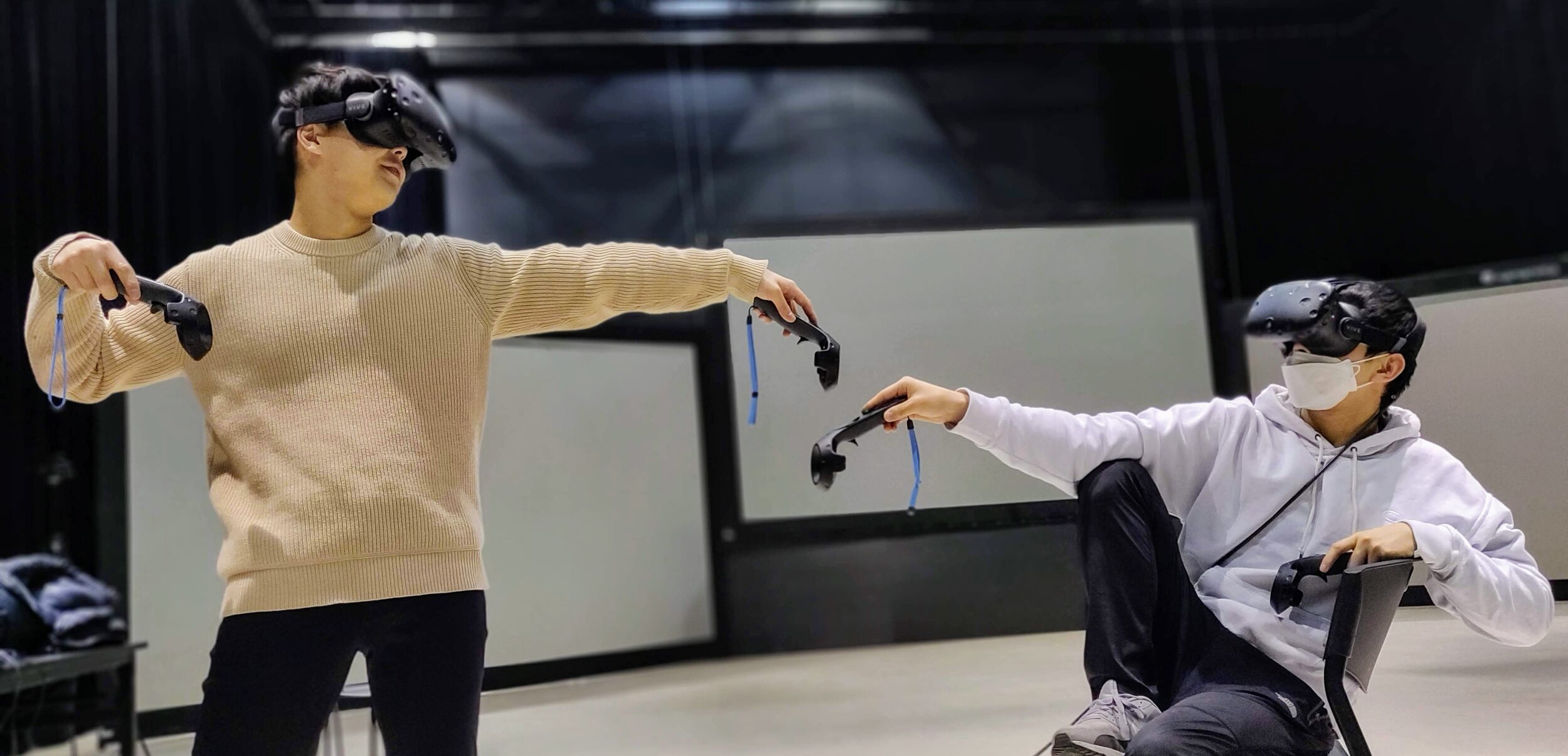In deze blogpost brengen we je op de hoogte van de voortgang van project Spiegelstem
“Snoezelen is een samentrekking van snuffelen en doezelen.. het wordt beleefd in een schemerige, sfeervolle ruimte waar zachte muziek klinkt en er wordt uitdrukkelijk beroep gedaan op de zintuigen.”
Wanneer een speler zich op het speelveld bevindt en geluid maakt, verschijnt er een vis.
Als de speler klapt, verschijnt er een vuurvliegje. Deze vissen en vuurvliegjes komen rustig naar de speler toe en zwemmen om hen heen. Bij elk geluid dat de speler maakt verschijnt er een nieuwe vis. De kleur die een vis aanneemt is afhankelijk van de klank die de speler maakt en de lengte is afhankelijk van hoe lang de klank wordt aangehouden. Spelers kunnen zelfs zebravissen of regenboogvissen maken als ze verschillende klanken achter elkaar maken.
In deze blog vertellen we over de nieuwe Snoezelmodus van spiegelstem. Het doel van deze modus is tweeledig. Allereerst willen we dat Spiegelstem naast de gewone spelmodus ook kan worden gebruikt als interactieve manier om te ontspannen. Daarnaast willen we met deze modus spelers op een toegankelijke manier kennis laten maken met de interactieve functies van Spiegelstem, zoals het gebruik van stem en beweging.
Proces van ontwikkeling
Oorspronkelijk was het plan om eerst een multiplayer variant te ontwikkelen. Echter, na overleg met onze partners besloten we om eerst de Snoezelmodus te ontwikkelen. Er bleek namelijk dat er een sterkte behoefte was voor een ontspanningsmogelijkheid. Tegelijkertijd wordt er achter de schermen wel al doorgewerkt aan de basisstructuur van de multiplayer. Om de snoezelmodus te ontwikkelen hebben we verschillende stappen doorlopen. Zo zijn er focusgesprekken gevoerd op beide locaties, zijn er schetsen en sfeerimpressies gemaakt en de interacties zijn uitgewerkt in een eerste prototype. Tijdens een co-creatiedag met Monobanda, de zorgpartners, de onderzoeker en de programmeurs is dit prototype uitgeprobeerd en is het concept verder uitgewerkt.
Co-creatie dag
Begin februari kwamen de projectmanager, onderzoeker, ontwerpers en programmeurs samen met de groepsbegeleiders, stagaires, therapeuten en gedragsdeskundigen van beide zorglocaties naar Monobanda voor een grote co-creatiesessie gericht op de snoezelmodus. Er was tijd om kennis te maken, te brainstormen over het ontwerp en de implementatie, maar natuurlijk ook om te spelen en te ervaren.
Onderzoek
In eerdere versies was de eerste ‘akte’ van Spiegelstem gericht op uitrazen en activeren. Uit de focusgesprekken met de groepsbegeleiders op de Zonnering (Pluryn) bleek echter dat er behoefte was om jongeren direct in een kalmerende setting te kunnen plaatsen. Ook bij de Trampoline (Philadelphia) bleek het inbouwen van ontspanningsmomenten van groot belang te zijn. De Trampoline beschikt al over snoezelruimtes, maar deze zijn niet interactief. Hierdoor ontstond de vraag of een snoezel ook gebruikt zou kunnen worden om jongeren juist op een laagdrempelige manier te kunnen activeren. Op basis van deze gesprekken werd het doel geconcretiseerd: een snoezelmodus die gebruikt kan worden om te ontspannen, maar die spelers ook stimuleert om kennis te maken en te experimenteren met de interacties van Spiegelstem. In vervolggesprekken werd er aandacht besteed aan mogelijke gebruiksscenario's. Zo zou bij de Trampoline de snoezel ingezet kunnen worden tijdens vaste ontspanningsmomenten en zou het bij de Zonnering mogelijk ingezet kunnen worden op momenten van onrust in de dag, zoals vlak na het arriveren op de groep.
Development
Ruwe schets
In eerste instantie hebben we schetsen gemaakt om ons buiten de conventionele paden te leiden. Het doel was om een eerste idee te ontwikkelen dat voldoende abstract was, zodat het ook andere associaties kon oproepen. Uit onze ervaring blijkt namelijk dat wanneer gebruikers hun eigen interpretaties aan het concept kunnen geven, het persoonlijker en betekenisvoller wordt.
Sfeerimpressie
Vervolgens is een sfeerimpressie van de ruimte in deze modus gecreëerd, waardoor er een beter beeld kon worden gevormd van de mogelijke uitstraling. Deze impressie vormde ook een basis voor de focusgesprekken en co-creatie om samen verder op voort te bouwen. Aanvankelijk hadden de vissen in de impressie slechts één kleur en waren ze allemaal van dezelfde grootte, maar geleidelijk aan is dit veranderd.
Interacties uitwerken
Nadat de eerste schetsen en sfeerimpressie waren gemaakt, was het tijd om te gaan brainstormen over de mogelijke interacties en technische aspecten. We dachten na over wat spelers in de snoezelmodus zouden kunnen en willen doen en welke interacties het beste aan zouden sluiten bij het doel van de snoezelmodus.
Prototype maken
In grote lijnen omvat het maken van het prototype:
- Het in kaart brengen van interacties en verkennen van mogelijke scenario’s.
- Het bepalen van de technische vereisten en verkennen van aanvullende mogelijkheden.
- De ontwikkeling van het eerste prototype en het uitvoeren van tests op kantoor.
- Het uitvoeren van de eerste tests met zorgpartners (bijv. tijdens co-creatie sessies).
Technische uitdagingen en oplossingen
Tijdens het ontwikkelproces zijn we voor meerdere uitdagingen komen te staan die gevolgen hadden voor de techniek en de gebruikerservaring. We zullen de meest belangrijke uitdagingen benoemen en de oplossingen die we hiervoor hebben bedacht.
Hoe groot moeten de vissen zijn? Wat is de beste schaal?
Grote vissen bleken al snel te spannend voor de kinderen. Hoewel de grootte op het scherm meeviel, veranderde een kleine goudvis op een projectiescherm van 2x3 meter in een indrukwekkende snoek. Daarom was het belangrijk om de beste vorm en grootte te vinden.
Hoe kunnen we spelers stimuleren om hun stem (op verschillende manieren) te gebruiken?
De speler wordt uitgedaagd om verschillende klanken te maken, waardoor bubbels in verschillende kleuren uit een buis komen. De kleur van de bubbels bepaalt de kleur van vis die uit de buis komt zwemmen. Het maken van opeenvolgende verschillende geluiden resulteert ook in gemengde kleuren zoals gestreepte of regenboogvissen.
Hoe laat je de spelers naar een andere modus gaan zonder knoppen of de pc te gebruiken?
Om over te schakelen naar een andere modus moet de speler op de schelp in de hoek staan. Wanneer de speler daar staat, klapt de schelp twee keer. Als de speler dan ook twee keer klapt, wordt de volgende modus gestart.
Hoe stimuleren we kleine interacties voor de stillere gebruikers?
Zelfs kleine interacties, zoals klappen, worden gevisualiseerd. Bij het klappen verschijnen er bijvoorbeeld kleine vuurvliegjes die om je heen cirkelen en op je gaan zitten als je stil blijft zitten.
Welke interactie vindt plaats als een speler heel stil is en nauwelijks beweegt?
Voor het geval een speler nauwelijks input geeft, wordt de speler alsnog herkent door de installatie: het water kabbelt om de speler heen en de vissen zwemmen langzaam om de speler heen.
Hoe visualiseren we boze geluiden?
Door het knijpen van de stem van de speler ontstaan er ribbelige randjes op de vissen.
Rustgevende anemoon
Een idee dat voortkwam uit de co-creatie was het maken van een zeeanemoon die in een kalm ademhalingsritme open en dicht zou gaan. Kinderen zouden hier rustig naar kunnen kijken en eventueel in hetzelfde ritme meeademen. Later kwam het idee om deze anemoon ook geluid te laten maken als de speler dichtbij zou komen om de speler te stimuleren om geluid te maken.
Wat zijn de vervolgstappen?
Het uitvoeren van playtests met jongeren en begeleiders om feedback te verzamelen en op basis daarvan wijzigingen door te voeren.
Het schetsen van gebruiksscenario's waarin wordt beschreven hoe de snoezelmodus kan worden ingezet in het weekprogramma van de zorglocaties.
Het integreren van een ademhalingselement. Er wordt op dit moment gedacht aan een anemoon die spelers kan aanmoedigen om rustig adem te halen door open en dicht te gaan.
Het testen en het aanpasbaar maken van verschillende niveaus van prikkels, bijvoorbeeld door het maximum aantal vissen in het veld te verlagen of verhogen, of de snelheid van de vissen aan te passen. Het rekening houden met prikkels bij kinderen en jongeren kwam duidelijk als wens naar voren in de co-creatie sessies.
Het houden van aanvullende gesprekken en co-creatie sessies met de zorgmedewerkers van Pluryn en Philadelphia om aanvullende ideëen en feedback te verzamelen.
Wil je op de hoogte blijven van alle ontwikkelingen binnen het Spiegelstem project?
Houdt deze website en onze social media in de gaten!




